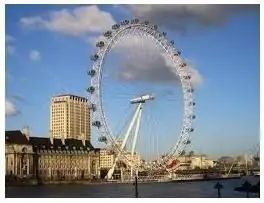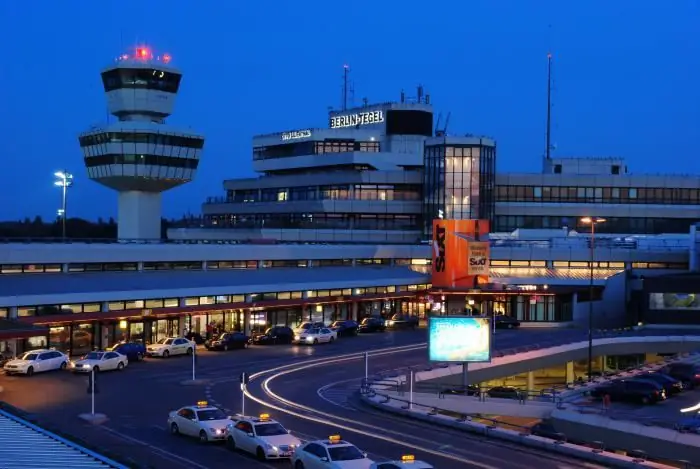- Author Harold Hamphrey [email protected].
- Public 2023-12-17 10:06.
- Last modified 2025-06-01 07:20.
This monumental structure is well known throughout the world. The powerful and majestic Brandenburg Gate in Berlin is an example of classicism in Germany. They were erected in 1788-1791 by order of Friedrich Wilhelm II - King of Prussia. The author of the monument is the architect Karl Gotthard Langhans, who also led the construction.

The building was originally called the Gate of Peace. Their facade was painted white. Decorated it and designed a six-meter quadriga, controlled by the goddess of Victory - Victoria, Gottfried Schadov. After Napoleon conquered Berlin, he dismantled the chariot and moved it to Paris, but when his troops were defeated, the goddess Victoria returned to her rightful place and was "rewarded" with the Iron Cross, which was created by Friedrich Schinkel.
In the early nineties of the nineteenth century, the Brandenburg Gate met victorious soldiers, in 1918-1920 counter-revolutionary soldiers passed through them, and in the forties of the twentieth centurythey became the scene of National Socialist celebrations.
During the Second World War, the Brandenburg Gate was seriously damaged after the capture of Berlin. In May 1945, the flag of the Soviet Union fluttered from the quadriga, which was completely destroyed, and a huge portrait of Comrade Stalin was erected.
In 1956, the damaged Brandenburg Gate began to be restored, and in 1961 they were built into the built Berlin Wall, which mercilessly divided the city into two parts: eastern and western. In 1989, when the Berlin Wall was torn down, the gates opened and Chancellor Helmut Kohl walked in to meet his East German colleague Hans Modrow. Since then, the Brandenburg Gate has been a symbol of peace and unity of the city and the country.

In 2000, the monument was closed for restoration, which lasted two years. Today, the Brandenburg Gate (photo) decorates Berlin again.
Of course, the whole of Germany is proud of this famous monument. Berlin, whose sights are of historical, cultural and architectural value for the whole country, cannot be imagined without the Brandenburg Gate. Today, the Hall of Silence, which is located in the guardroom, does not let you forget about the past. Berliners and guests of the capital come here to keep quiet and think about the tragic past of Germany.
The Brandenburg Gate is a majestic landmark of Berlin and its calling card. This is a masterpiece of architectural art, which isFor many decades it has attracted tourists from all over the world. To come to Berlin and not visit this monument means not to see the heart of Germany. Today, the Brandenburg Gate fits perfectly into the city and is completely inseparable from the buildings of Paris Square, where they are located.
This is Berlin's most recognizable landmark. They are located in the center of the capital and adjoin the Linden Alley, which connects them with the former royal residence.

Today the magnificent monument is in danger. At the beginning of the twenty-first century, the construction of another line of the Berlin underground began not far from it, and the gate got a crack. Now they are waiting for another major reconstruction.






